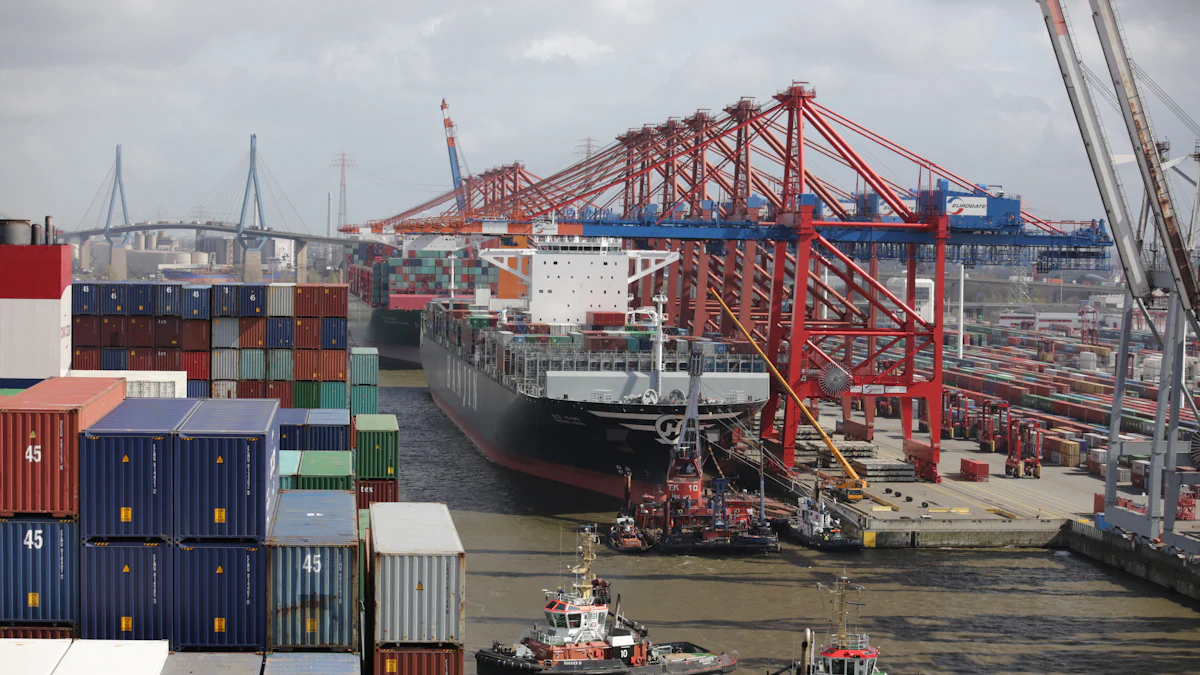Global freight cost hikes have become a pressing issue in recent years. The surge in ocean freight rates stems from high demand, port congestion, and limited capacity. Understanding the causes and implications of these cost hikes is crucial for businesses and consumers alike. Rising shipping costs impact the prices of imported goods and contribute to inflation. For instance, the cost of shipping a container on transoceanic trade routes increased seven-fold in the 18 months following March 2020. This phenomenon affects various sectors, including the custom disposable plastic cup industry.
Overview of Global Freight Costs
Historical Context
Pre-pandemic Freight Costs
Before the COVID-19 pandemic, global freight costs remained relatively stable. The shipping industry experienced fluctuations due to seasonal demand and fuel price changes. However, these variations did not cause significant disruptions. Businesses could plan their logistics with predictable costs. The custom disposable plastic cup industry, for example, maintained steady shipping rates for importing raw materials and exporting finished products.
Impact of COVID-19
The COVID-19 pandemic drastically altered the landscape of global freight costs. Port congestion, labor shortages, and increased demand led to unprecedented surges in shipping rates. The cost of shipping a container on transoceanic trade routes increased seven-fold in the 18 months following March 2020. This surge impacted various sectors, including the custom disposable plastic cup industry, which faced higher operational costs. The Logistics Manager’s Index (LMI) recorded its highest score due to these transportation cost increases.
Current Trends
Recent Data and Statistics
Recent data indicates that global freight costs have started to stabilize but remain elevated compared to pre-pandemic levels. The average global container freight rate rose by three times between September 2020 and September 2021. Shipping costs have returned to levels not seen since after the Great Financial Crisis. The custom disposable plastic cup industry continues to monitor these trends closely to adjust pricing strategies.
Regional Variations
Freight costs exhibit significant regional variations. Asia-to-Europe routes experienced some of the highest increases due to port congestion and limited capacity. In contrast, North American routes saw moderate increases. These regional differences affect businesses differently. For instance, the custom disposable plastic cup industry in Europe faces higher import costs compared to North America. Companies must navigate these variations to maintain profitability.
Causes of Freight Cost Hikes

Supply Chain Disruptions
Port Congestion
Port congestion has emerged as a significant factor in the rise of global freight costs. The pandemic led to a surge in demand for goods, overwhelming ports worldwide. Ships queued for days, sometimes weeks, waiting to unload cargo. This congestion resulted in delays and increased costs for businesses, including those in the custom disposable plastic cup industry. The IMF Blog highlighted that supply chain disruptions have led to higher container shipping costs and increased input prices.
Labor Shortages
Labor shortages further exacerbated supply chain disruptions. Ports and logistics companies struggled to find enough workers to handle the increased volume of goods. The ECB Economic Bulletin noted that labor shortages contributed to delays and higher transportation expenses. The custom disposable plastic cup industry faced challenges in maintaining production schedules due to these labor shortages.
Increased Demand
E-commerce Boom
The boom in e-commerce significantly impacted freight costs. Consumers shifted to online shopping during the pandemic, leading to a spike in demand for shipping services. This surge strained the capacity of shipping lines and increased freight rates. Businesses in the custom disposable plastic cup sector saw a rise in shipping costs as they adapted to the growing e-commerce market.
Seasonal Peaks
Seasonal peaks also played a role in driving up freight costs. The holiday season and other peak periods saw a surge in shipping demand. Carriers increased rates to manage the higher volume of goods. The custom disposable plastic cup industry experienced higher costs during these peak times, affecting profitability and pricing strategies.
Fuel Prices
Oil Market Fluctuations
Fluctuations in the oil market directly influenced freight costs. Shipping companies faced higher fuel prices, which they passed on to customers. The custom disposable plastic cup industry had to absorb these increased costs or pass them on to consumers. The volatility in oil prices added another layer of uncertainty to shipping expenses.
Environmental Regulations
Environmental regulations also impacted fuel prices and, consequently, freight costs. Stricter emissions standards required shipping companies to invest in cleaner fuels and technologies. These investments increased operational costs. The custom disposable plastic cup industry, like many others, faced higher shipping rates due to these regulatory changes.
Geopolitical Factors
Trade Wars
Trade wars have significantly impacted global freight costs. Countries impose tariffs and trade barriers, leading to increased shipping expenses. The custom disposable plastic cup industry faces higher costs when importing raw materials due to these trade conflicts. Businesses must navigate complex regulations and tariffs, which complicate logistics and increase operational expenses.
The IMF Blog highlights that supply chain disruptions from trade wars lead to delays in goods delivery. Increased transportation expenses result from these geopolitical tensions. Companies in the custom disposable plastic cup sector experience challenges in maintaining competitive pricing due to these added costs.
Sanctions and Tariffs

Sanctions and Tariffs Increase Freight Costs
Sanctions and tariffs drive up freight costs by restricting trade, forcing industries like custom disposable plastic cups to seek costlier alternatives and causing supply chain disruptions.
Price Implications
Impact on Businesses
- Higher Costs: Freight rate increases raise operational costs and affect profit margins, leading to revised pricing strategies.
- Supply Chain Adjustments: Companies seek local suppliers and invest in logistics technology to reduce costs and delays.
Impact on Consumers
- Higher Prices: Increased freight costs are passed on to consumers, raising retail prices and contributing to inflation.
- Product Shortages: Supply chain issues lead to inventory shortages and limited product availability, affecting consumer satisfaction.
Long-term Economic Effects
- Inflation: Persistent high freight costs drive inflation, impacting purchasing power and economic stability.
- Trade Shifts: Rising costs prompt businesses to explore regional markets and new trade routes, altering global trade patterns.
Conclusion Strategic adjustments, such as diversifying supply chains and investing in technology, are essential for mitigating the impact of rising freight costs on businesses and consumers.
Post time: Jul-09-2024

